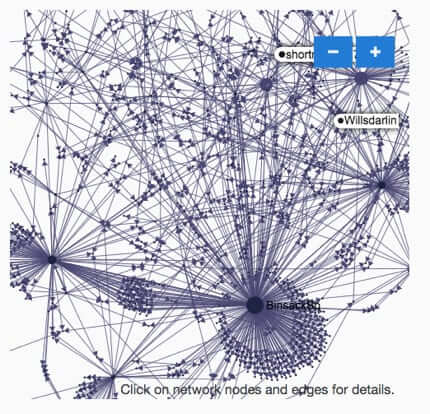
A web-based service offered as a project by the University of Indiana allows you to track the spread of specific misinformation (i.e. false news) on Twitter and Facebook, as well as checking how many times it was actually fact-checked by people to see if it was..you know… true.. before passing it along. The service, called Hoaxy, is the brainchild of a team out of Indiana University’s Network Science Institute (IUNI), in conjunction with Indiana U’s Center for Complex Networks and Systems Research (CNetS).
By tracking how often and where the link (technically the “URL”) to a given story has been shared on Facebook and Twitter, as well as how often it has been fact-checked at sites like Snopes, the Hoaxy team is able to give a detailed – and frightening – overview of how this sort of misinformation is spread.
Turns out, not surprisingly, that people do very little fact-checking before passing something along – hey, why let a little thing like the facts get in the way of a sensational story?
To check this out for you, we decided to look at the story that Hillary Clinton was involved in a child sex ring. (We figure that with the election over, hopefully we can use this example without it becoming a political hot potato here on TIP.)
So, we went to the Hoaxy site at http://hoaxy.iuni.iu.edu, and entered our search:
The Internet Patrol is completely free, and reader-supported. Your tips via CashApp, Venmo, or Paypal are appreciated! Receipts will come from ISIPP.
That search yielded several articles relating to that ‘news’:
There were several more – we just selected the first three that were on point. Note that just these three stories were shared on Facebook over 80,000 times.
After selecting your stories, hit ‘Visualize’.
This builds the graphs and network visualization.
Hoaxy Visualization of Spread of Clinton Story
Network Visualization of Spread of Clinton Story
Graph Visualization of Spread of Clinton Story
So what are we looking at here? Well, if you zoom in on the visualization you can see that, for example, someone named ‘BinsackSB’ seems to be a major epicenter originating the spread of this particular rumour.
BinsackSB is the Twitter account for Scott Binsack.
Now, Scott has 9000+ followers, and 313 of his followers retweeted the news story “Netanyahu To Release Evidence Of Washington Pedophile Ring”, none, apparently, first verifying whether it was, in fact, true.
From there, as you can see by the following image, it spread far and wide.
Now, here’s the thing…this story is still being shared as of today (1/6/17), 83,881 times on Facebook as of the writing of this story, and another 3114 on Twitter, and as best as we can tell from the graphs, almost nobody fact-checked it (see how the orange line is essentially flat-lined?)
(Here is the debunking of that particular one on Snopes: http://www.snopes.com/pizzagate-conspiracy/.)
If you want to try Hoaxy out for yourself on whatever (mis)information you like, to see just how that (mis)information is spread, you can try Hoaxy here.
The Internet Patrol is completely free, and reader-supported. Your tips via CashApp, Venmo, or Paypal are appreciated! Receipts will come from ISIPP.



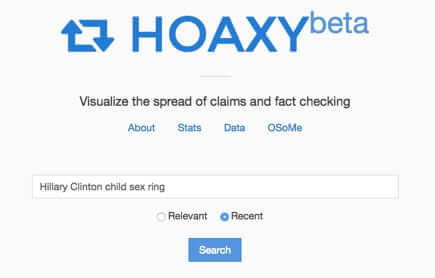
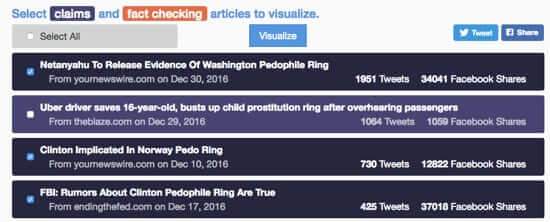
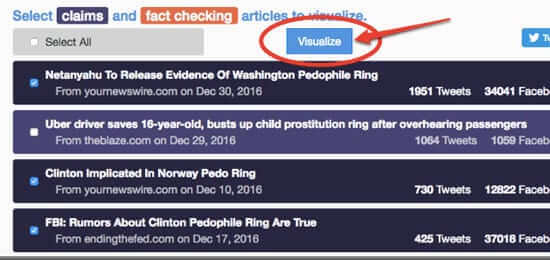
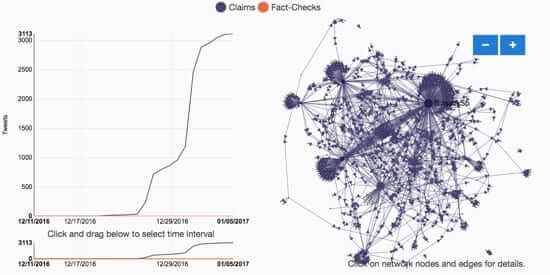
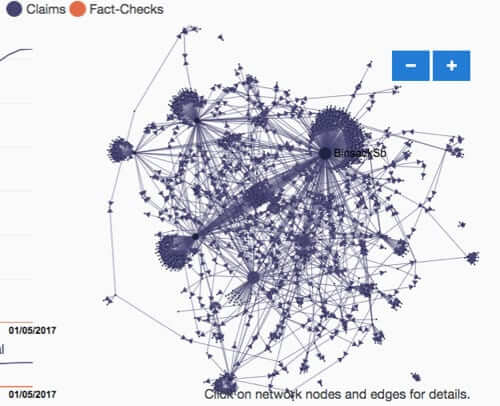
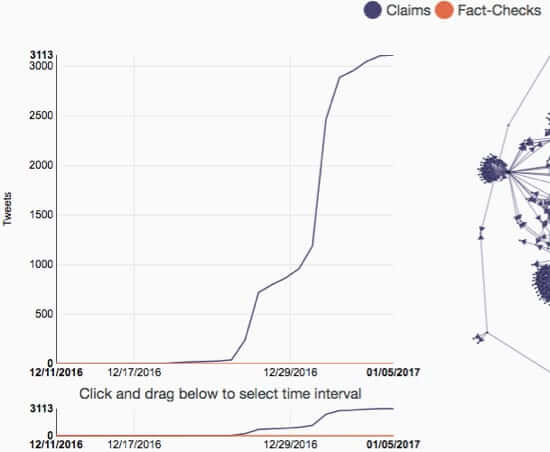
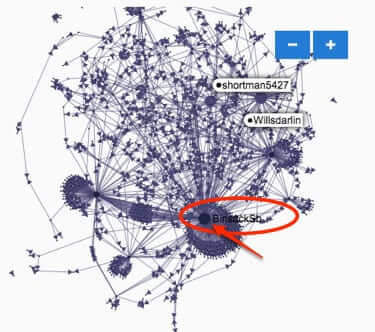
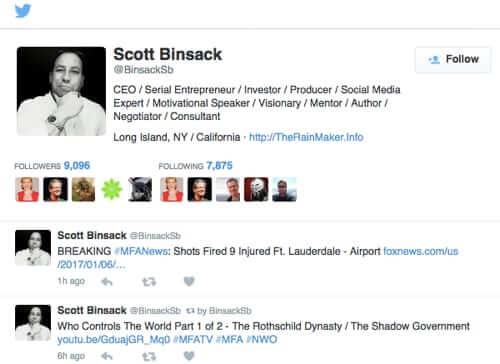







Thanks! I shared this on Facebook. This is stunning.
Thank you for this article. I like this initiative and commend those involved in it. The visualisation really does bring home just how easily and rapidly information, right or wrong, can spread. A cautionary factor for us all.
Now, we need an extension to the application that will put up Internet Billboards to highlight the misinformation and those spreading it…